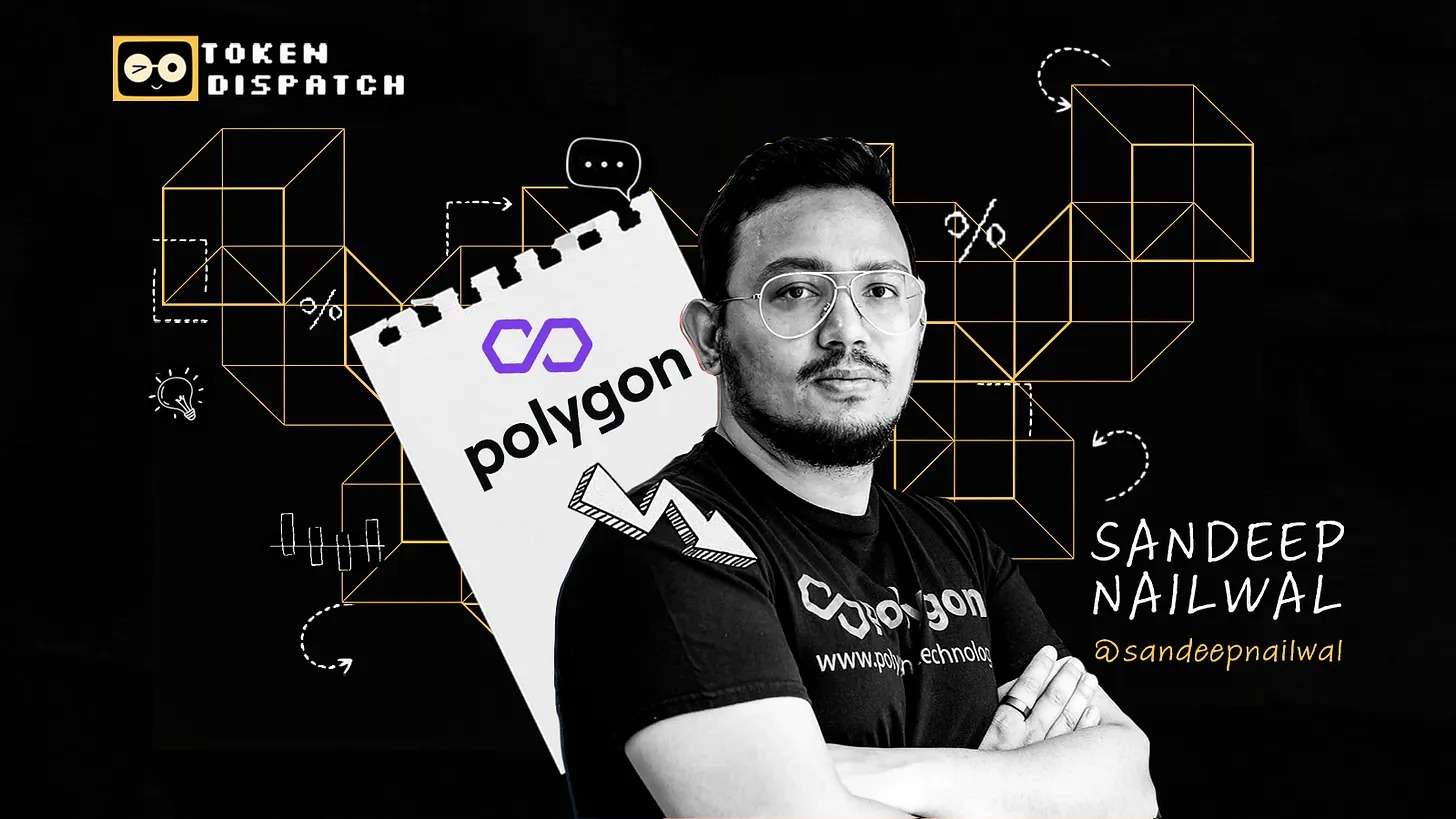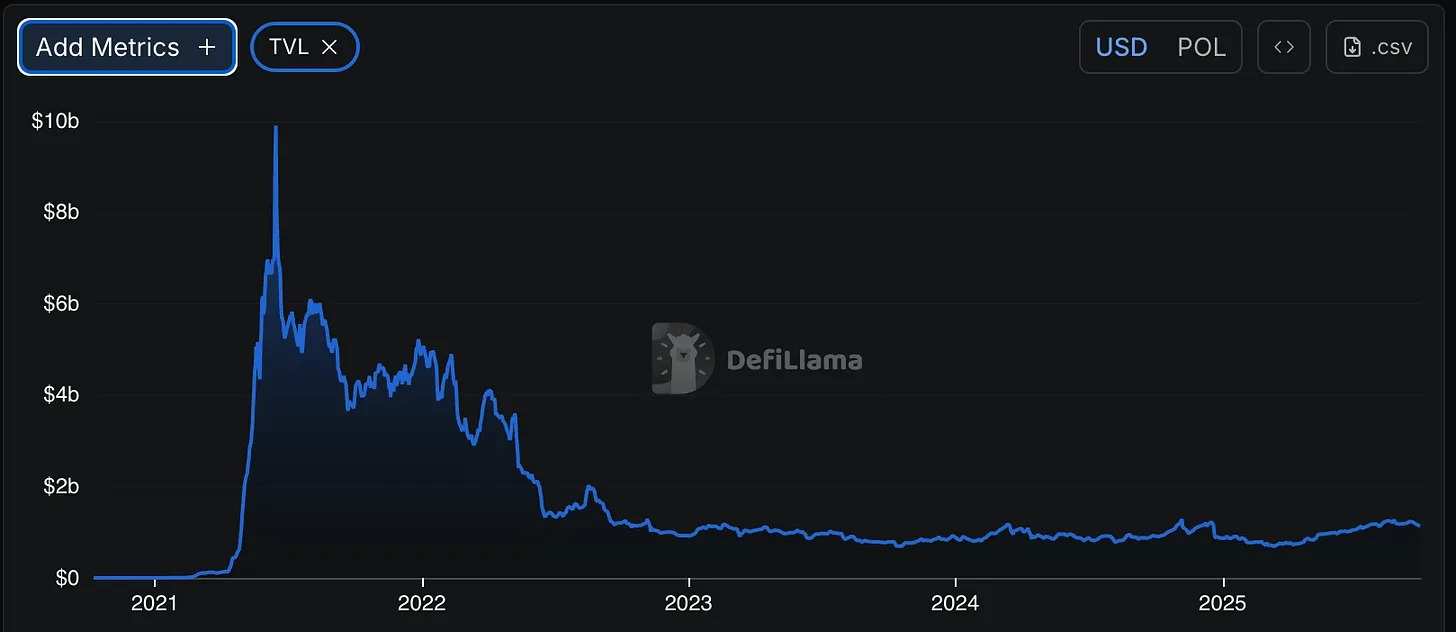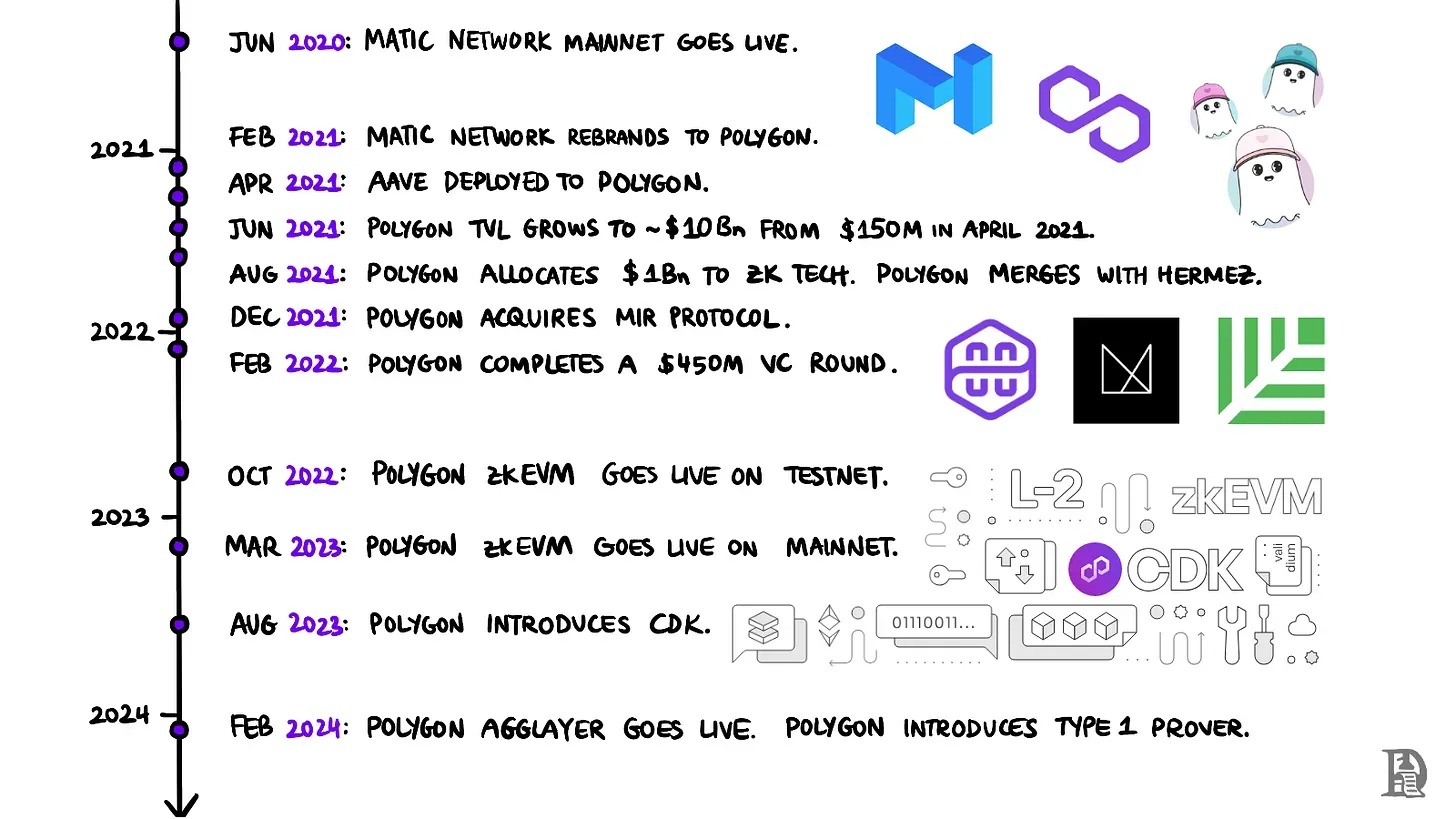Article Author: Thejaswini M A
Article Translation: Block unicorn

Preface
Sandeep Nailwal’s father often didn’t come home for days.
When he did return, his monthly $80 salary was gone, squandered on alcohol and gambling debts.
The family lived in a settlement along the Yamuna River in Delhi, an area locals derisively called “Jamna-Paar,” which roughly means “the other side of the river.” But it was no compliment.
As a child, Sandeep always stood outside the classroom because his parents hadn’t paid the tuition, so he couldn’t enter. When he was ten, his younger brother suffered a serious accident, and his childhood ended. His father’s addiction meant someone had to step up. That person was Sandeep.
Today, Nailwal runs Polygon, a blockchain infrastructure company that processes millions of transactions daily, collaborating with companies like JPMorgan, Stripe, and Disney. From the slums of Delhi to building technology used by Fortune 500 companies, the journey took just thirty years.
But the road was far from smooth, and the scars of his early experiences influenced every decision he made.
Sandeep Nailwal was born in 1987 in Ramnagar, a rural village at the foot of the Himalayas with no electricity. His parents were both illiterate when they married, and when he was four, they moved to Delhi in search of opportunities unavailable in the village.
What they found instead was a slum.
The settlements on the east bank of the Yamuna were crowded, dirty, and violent. Illegal guns and knives were the tools of choice for settling disputes. His family squeezed into whatever accommodation they could afford, moving frequently as circumstances changed.
His parents didn’t understand education. They didn’t know children could start school as young as three or four. Sandeep didn’t start school until he was five, simply because no one told his parents. Starting so late meant he was always the oldest in his class, two years older than his classmates, a constant reminder that he was behind.
The trauma of poverty is not just about going hungry or the shame of tattered clothes. It’s also about watching your father gamble away your tuition while you stand outside the classroom in shame. It’s about watching your mother struggle to feed the family while battling an alcoholic husband.
It’s about understanding at a young age that no one is coming to save you.
The Sixth Grade Entrepreneur
Sandeep’s way of coping with poverty was to work. In sixth grade, he began tutoring younger students, earning 300 rupees a month. He also found a friend who owned a stationery shop and started buying pens at cost, then selling them to classmates at a markup.
Though the amounts were small, the lesson was important: you can create value, capture a portion of it, and use that money to change your circumstances.
He dreamed of getting into the Indian Institutes of Technology (IIT), the prestigious engineering colleges that offered ambitious students a way out of poverty. But IIT required expensive coaching to compete for 5,000 spots among millions of applicants. His family couldn’t afford it.
So, Nailwal enrolled in the second-tier Maharaja Agrasen Institute of Technology, paying tuition with student loans. Sometimes, he had to use those loans to pay off his father’s gambling debts instead of buying textbooks or a computer.
His decision to study computer science came from seeing Mark Zuckerberg on Indian television. At the time, Facebook was booming globally, and young Sandeep thought, “I want to create my own Facebook.”
He now admits he was naïve then. But the combination of naivety and desperation forged a special kind of determination.
After earning his engineering degree, Nailwal pursued an MBA at the National Institute of Industrial Engineering in Mumbai. There, he met Harshita Singh, who would later become his wife. After graduation, he worked as a consultant at Deloitte, quickly paying off his student loans and his father’s debts.
Nailwal held positions at several companies: software developer at Computer Sciences Corporation, consultant at Deloitte, and CTO of the e-commerce division at Welspun Group. He excelled at work, earned promotions, and had a good income.
But he could never shake the urge to start his own business.
In Indian culture, there’s pressure to buy a house before marriage. A man without property is seen as having no future. Nailwal felt this pressure acutely. He had a good job, could get a loan to buy a house, and could settle down.
Harshita said something that changed everything: “You’ll never be happy this way. I don’t care about having our own house; we can rent.”
In early 2016, Nailwal quit his job. He borrowed $15,000 (money he had originally planned to use for his wedding) and founded Scope Weaver, an online platform for professional services. His idea was to standardize India’s fragmented service industry, creating an Alibaba-like platform, but for Indian service providers instead of Chinese manufacturers.
The company did reasonably well and generated some revenue. But Nailwal realized he was becoming the bottleneck. Clients wanted a face to take responsibility when things went wrong. He was turning into a regular service provider, only now he had to pay employees’ salaries.
The business couldn’t scale. After a year, he began looking for the next opportunity.
An $800 Bitcoin Bet
Nailwal first heard about bitcoin in 2010. A friend suggested mining together, but Nailwal didn’t have a laptop, so the conversation ended there.
In 2013, while pursuing his MBA, he encountered bitcoin again. He tried to set up a mining rig, but his laptop was too weak. He tried to understand bitcoin, but after reading two paragraphs and seeing “no backing,” he dismissed it as a scam and gave up.
In 2016, bitcoin came into his view again. After realizing Scope Weaver couldn’t become the company he envisioned, Nailwal began exploring “deep tech” opportunities. He considered AI but found the math beyond his capabilities.
Then, he actually read the bitcoin whitepaper.
“Oh, this is huge,” he thought. “This is humanity’s next revolution.”
Whether it was conviction or recklessness, depending on your perspective, Nailwal took the $15,000 he’d borrowed for his wedding and put it all into bitcoin at $800 per coin.
He admits, “My FOMO was so strong at the time that even if I was a year late and the price was $20,000, I would have done the same thing and lost all my money.”
But he didn’t lose. Bitcoin’s price rose. More importantly, Nailwal discovered Ethereum and its programmable smart contracts. This was a new computing platform for running applications without centralized control.
He was completely hooked.
In 2017, Nailwal met Jaynti Kanani through the online Ethereum community. Kanani proposed a solution to Ethereum’s scaling problem. At the time, the Ethereum network was congested due to its own success. CryptoKitties had caused transaction fees to soar by 600%.
Kanani and Nailwal, along with co-founders Anurag Arjun and Mihailo Bjelic, began developing Matic Network in early 2018. They raised $30,000 in seed funding, planning to build a working product first.
This principled approach nearly doomed them. By the time they had a usable testnet, the crypto market had crashed. No one wanted to invest, especially in Indian projects. At the time, two Indian crypto projects had been exposed as scams.
“No one believed Indian founders could develop protocols,” Nailwal recalled.
The team survived on just $165,000 for the first two years. The founders took only a few thousand dollars in salary each month. Several times, they had only enough funds for three more months. Nailwal remembers begging other crypto founders for $50,000 just to survive another quarter.
In 2018, on the eve of his wedding, his life hit rock bottom. A Chinese fund had promised a $500,000 investment. Two days before the wedding, bitcoin fell from $6,000 to $3,000. The Chinese fund called and said, “We were going to invest 100 bitcoin. Now it’s worth half, so we’re not investing.” Worse, all of Matic’s funds were in bitcoin. Their value was also halved.
The wedding went ahead as planned. Friends celebrated with him. But Nailwal knew the company might be gone in three months.
In early 2019, Binance approved Matic to raise $5.6 million through its Launchpad program. Due diligence took eight months. This funding gave Matic some breathing room. But final approval was still not guaranteed. The team attended countless hackathons, visiting developers one by one to explain their technology.
Growth was slow at first, but in 2021, as Ethereum’s high fees made small transactions nearly impossible, growth accelerated. Developers flocked to Matic.
Originally launched as Matic Network, it was a single-chain scaling solution running as a sidechain, combining Plasma and Proof-of-Stake (PoS) mechanisms. In 2021, Matic Network underwent a major rebrand, becoming Polygon, reflecting its transition from a single chain to a broader multi-chain ecosystem aimed at providing diverse scaling solutions for Ethereum-compatible blockchains.
The market responded positively to the rebrand. Polygon’s market cap soared from $87 million at the start of 2021 to nearly $19 billion by December.

Developers flocked to Matic, and the network’s total value locked peaked at $10 billion.

In addition, the native token transitioned from $MATIC (used to secure the original Polygon PoS chain) to $POL (designed to support the entire Polygon ecosystem), especially with upcoming upgrades like the Staking Hub, aiming to consolidate and enhance cross-chain security and governance. This token migration was crucial, though during the transition, it brought some temporary uncertainty to holders and led to fragmented liquidity.
Polygon Labs also boldly shifted its strategic focus to zero-knowledge (ZK) Rollup, acquiring ZK-focused teams to develop zkEVM, a virtual machine capable of Ethereum-equivalent execution while enjoying the scalability benefits of ZK proofs. While Optimistic Rollup (OR) initially drew attention for its simpler design and earlier launch, Polygon’s emphasis on ZK Rollup reflects its long-term bet on Ethereum’s ultimate Layer-2 scaling solution. zkEVM technology aims to combine high security, scalability, and full compatibility with existing Ethereum tools, potentially positioning Polygon as a leader in future multi-chain architectures.

The Turning Point of the COVID-19 Pandemic
In April 2021, the second wave of COVID-19 hit India hard. Hospitals were overwhelmed, and oxygen supplies were short. Nailwal’s family in India all contracted COVID, while he was far away in Dubai, powerless to help.
“At that time, it was clear that our family couldn’t all make it through,” he said. “Not everyone would survive.”
He tweeted that he couldn’t stand by during the crisis. He created a crypto multi-signature wallet to receive donations, expecting to raise a total of $5 million. Within days, donations reached $10 million. Then, Ethereum founder Vitalik Buterin donated $1 billion worth of Shiba Inu tokens.

The real challenge was: how do you liquidate $1 billion worth of meme coins without crashing the market?
Nailwal worked with market makers, selling slowly over several months. The Shiba Inu community initially panicked over fears of a massive sell-off, but calmed down after Nailwal promised to proceed cautiously. In the end, he netted $474 million, far exceeding Buterin’s expectations.
The Crypto COVID Relief Fund deployed $74 million to India in emergencies. Nailwal returned $200 million to Buterin, who donated it to U.S. biomedical research. The remaining $200 million was reserved for long-term “blockchain impact” projects.
Character Forged in Adversity
By mid-2025, Polygon faces new challenges. $POL’s price has dropped more than 80% from its peak. Competing Layer 2 solutions from Arbitrum and Optimism are taking market share. The company expanded to 600 employees during the boom, leading to cultural issues and organizational bloat.
Nailwal made tough decisions. Two rounds of layoffs reduced the team to a more cohesive size. Several projects that took months of engineering time were canceled for no longer fitting the strategy.
In June 2025, Nailwal became the first CEO of the Polygon Foundation, consolidating leadership that had previously been dispersed among co-founders and board members. Of the four co-founders, three have stepped back from active roles; he is the last one remaining.
“When the critical moment comes, most founders can’t make the hard decisions,” he said in an interview. “Executing market strategies the hard way, firing people who don’t fit the current strategy, abandoning projects you’ve invested a lot of time and emotional energy into.”
When you cut projects you personally support or fire those who believed in your vision during tough times, those decisions feel different.
Under Nailwal’s full leadership, Polygon refocused on AggLayer, an interoperability protocol designed to unify blockchain networks. Its technical vision is to create infrastructure that allows thousands of independent blockchains to appear as a single, seamless network to end users.
“By 2030, there could be 100,000 to 1 million chains,” Nailwal predicts. “All activity will move to these application chains.”
It’s a bold claim. Whether it can be achieved depends on execution in the coming years.
The Long Game
Nailwal thinks in decades, not quarters. When discussing Polygon’s competition or the future of DePIN, he repeatedly mentions 10- and 50-year timelines.
“If you give me 10 years, I can tell you 100% that this is the ultimate architecture for crypto to go mainstream,” he said about AggLayer. “But whether it’s Polygon’s version or someone else building something similar, no one can predict.”
He is deeply convinced of the vision for blockchain infrastructure. Whether it’s achieved by Polygon or someone else matters far less than seeing it built.
Through the “blockchain impact” project, he is shifting from emergency relief to “incentive-based” philanthropy. He is planning an award similar to the Nobel Prize in India to inspire the next generation of scientists and engineers.
“I hope to get $2 trillion of output from this $200 million BFI,” he explained. The leverage he describes sounds absurd—until you remember he turned $30,000 in seed funding into a company briefly valued at $30 billion.
However, Polygon faces headwinds. Competitors like Arbitrum and Base have already captured more market share, offering simpler user experiences and stronger support. Polygon’s bridge technology remains complex, and the transition from MATIC to POL has brought uncertainty. The company’s developer-focused messaging has yet to translate into mass retail adoption like its competitors. Whether Nailwal’s long-term infrastructure investments will pay off depends on execution in an increasingly crowded market.
What’s certain is that the distance Sandeep Nailwal has traveled from his starting point is beyond most people’s imagination. But whether the infrastructure he’s built can help others as crypto helped him remains to be seen.
From a village without electricity to building the internet of value, the destination is still uncertain, and the journey continues.
This is the story of the Polygon guy. See you in our next article.
Until then… stay calm and do your own research (DYOR).